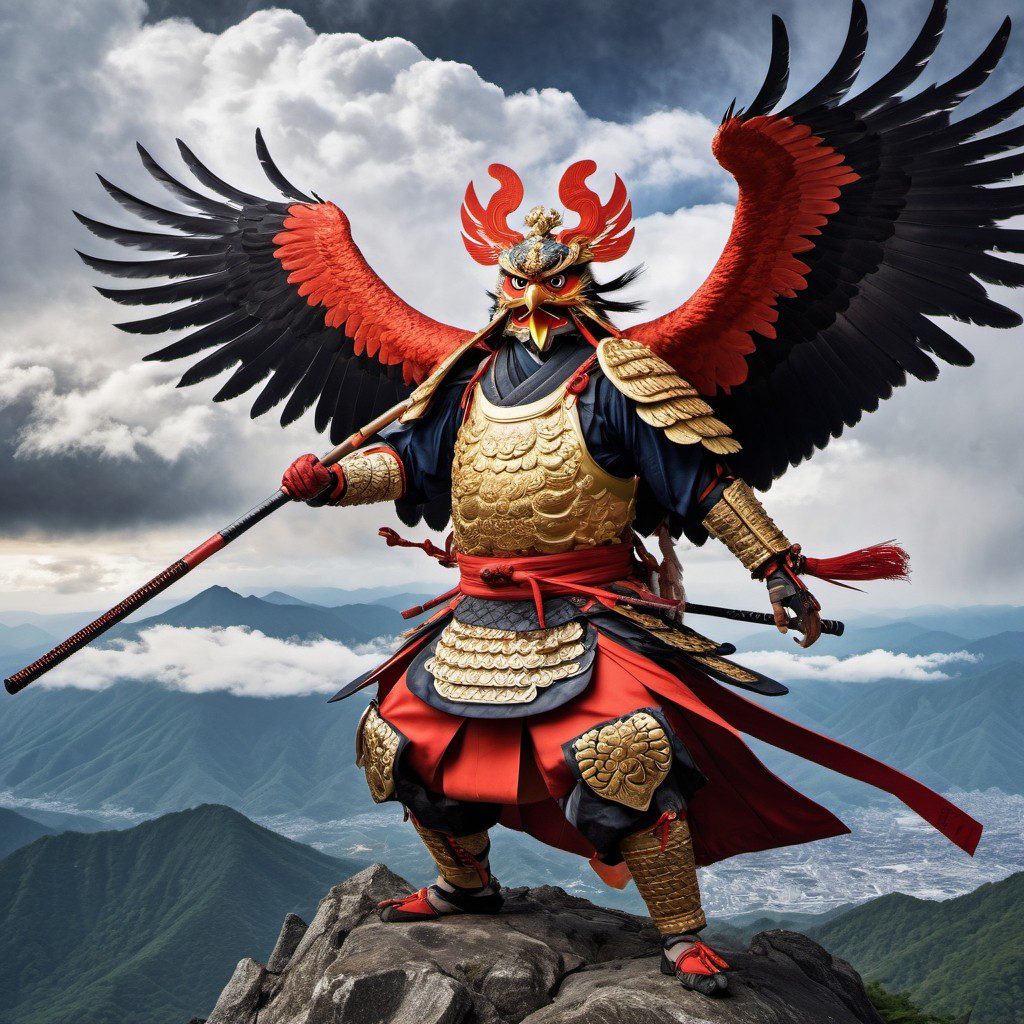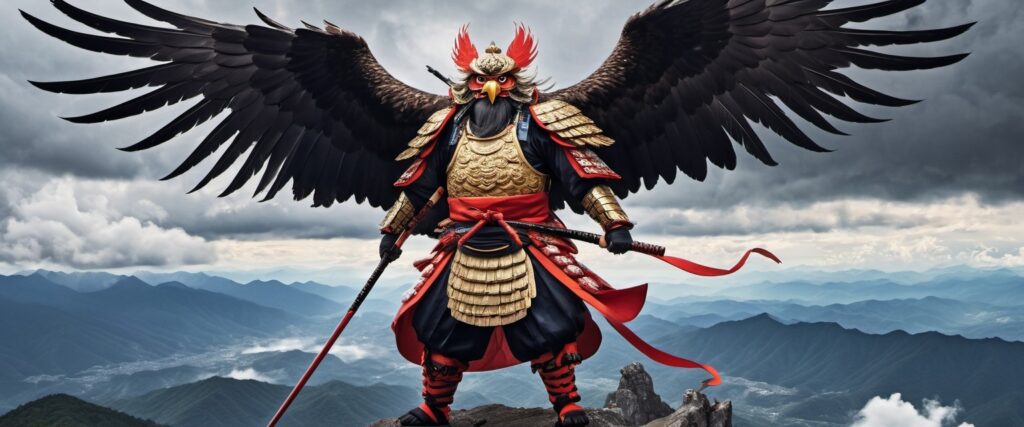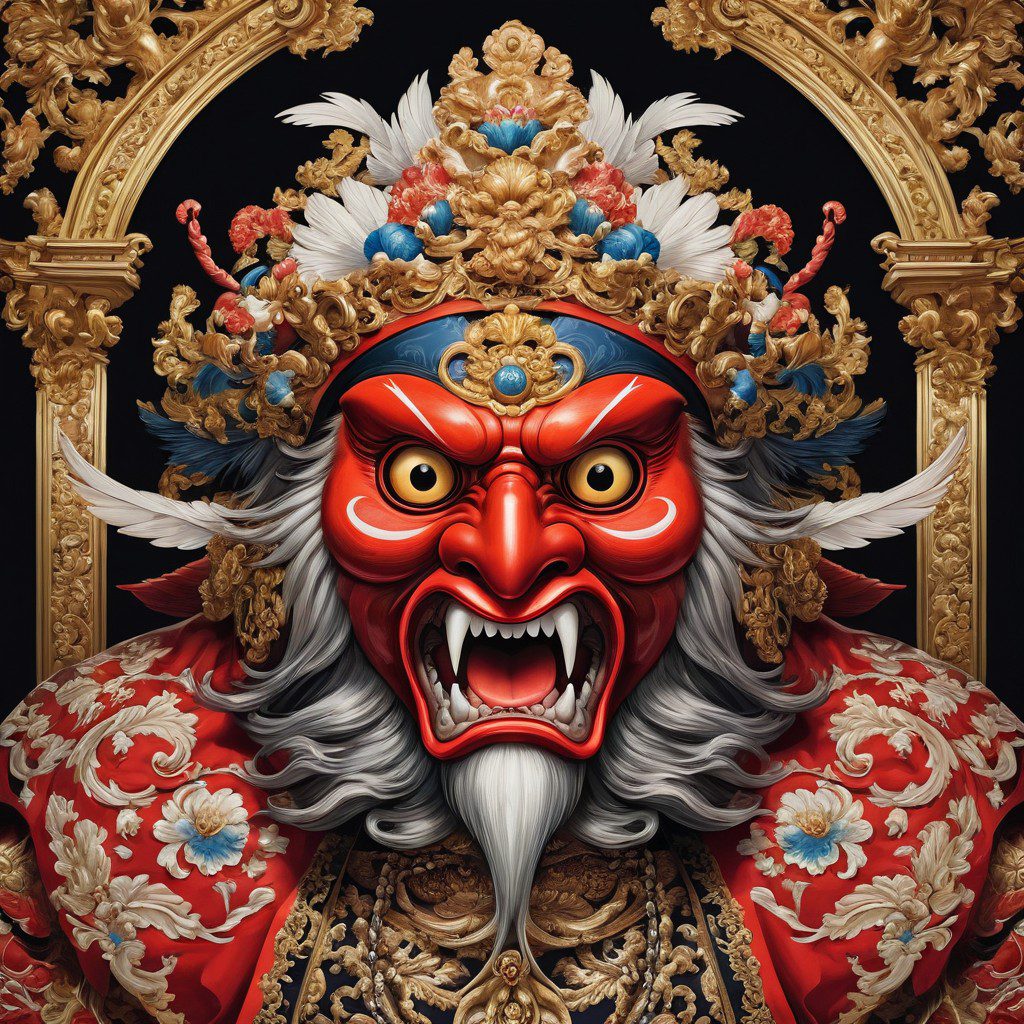Tengu: The Shape-Shifting Bird Demons of Japanese Folklore

In the dense forests and sacred mountains of Japan, the Tengu—part-bird, part-human creatures—are both feared and revered. These supernatural beings, known for their shape-shifting abilities and martial prowess, occupy a unique place in Japanese folklore. They are depicted as protectors of the mountains, skilled warriors, and mischievous tricksters, yet their ambiguous nature blurs the line between good and evil. The Tengu’s influence extends from ancient mythology to modern popular culture, where they continue to fascinate as symbols of both spiritual power and danger.
The Origins of Tengu
The name “Tengu” is thought to have been derived from the Chinese term Tiangou, which means “celestial dog” or “heavenly hound,” though the Japanese version of the Tengu took on entirely different characteristics over time. Unlike their canine-sounding name, the Tengu of Japanese myth are more often associated with birds, particularly crows, hawks, or other raptors. Over centuries, Tengu evolved into distinct figures with both human and avian traits, making them unique to Japanese folklore.
The earliest depictions of Tengu were more monstrous, resembling bird-like demons that spread chaos and misfortune. In early Buddhist texts, Tengu were seen as malevolent spirits who disrupted the practice of monks, spreading false teachings and tempting people away from the path of enlightenment. These early Tengu were associated with vanity, pride, and trickery.
However, over time, the perception of Tengu shifted. They became more complex characters, often depicted as guardians of the mountains and skilled warriors. In Shinto and Buddhist traditions, they evolved from being seen purely as disruptive demons to beings of both mischief and wisdom. By the medieval period, Tengu had taken on roles as protectors of temples, skilled swordsmen, and teachers of martial arts. Despite their trickster nature, they were often invoked for protection or guidance, especially by warriors.
The Two Types of Tengu

As the Tengu myth developed, these creatures split into two primary forms, reflecting their complex nature:
- Karasu Tengu: The Karasu Tengu (crow Tengu) is the more avian of the two, often depicted as having the body of a man and the head of a bird, usually a crow. These Tengu are typically smaller, more chaotic, and often mischievous or even malevolent. They are known for causing trouble, playing tricks on humans, and disturbing the peace in both the natural and spiritual worlds. They retain many of their original bird-like features, including wings, sharp claws, and a long beak.
- Daitengu: The Daitengu (great Tengu) are more human-like in appearance, often depicted as tall, imposing figures with red faces and long noses, which symbolize pride and arrogance. Unlike the Karasu Tengu, the Daitengu are seen as wiser and more powerful, sometimes serving as protectors of the mountains and mentors to skilled warriors. Their long noses, which have become a defining feature of Tengu in Japanese art, are said to reflect their heightened sense of self-importance and pride. Despite their haughty demeanor, Daitengu are often invoked for protection, and some are depicted as guardians of sacred sites.
Both types of Tengu are linked to mountains and forests, which they are believed to inhabit. Tengu are said to live in remote, secluded areas, often near temples or shrines, where they can observe the world from a distance. These creatures are also known to fly swiftly between mountains, carrying out their schemes or intervening in human affairs when necessary.
Powers and Abilities of the Tengu
Tengu are known for their vast array of supernatural abilities, making them both revered and feared figures in Japanese folklore. Their powers include:
- Shape-shifting: Tengu are master shape-shifters, able to transform into humans, animals, or even inanimate objects. This ability is often used to trick or deceive humans. A common tale involves a Tengu transforming into a human monk to spread false teachings or lure travelers into danger.
- Martial Prowess: Over time, Tengu became associated with martial arts and warfare. They are said to be skilled swordsmen, masters of the bō staff, and proficient in other forms of combat. In many legends, Tengu teach their combat skills to human warriors, particularly samurai. One of the most famous Tengu students in Japanese folklore is the legendary swordsman Minamoto no Yoshitsune, who was said to have learned his extraordinary swordsmanship from a Tengu.
- Flight and Teleportation: As bird-like creatures, Tengu have the ability to fly, often described as gliding silently through the air on their feathered wings. In some legends, they can also teleport, moving swiftly from one location to another in an instant.
- Control Over the Wind: Tengu are often linked to the element of wind, and some stories attribute their ability to summon powerful gusts, causing storms or knocking down trees and buildings. This power underscores their connection to the mountains and the skies, where they are most at home.
- Psychic Powers: In addition to their physical prowess, Tengu are believed to have psychic or spiritual powers, such as telepathy, mind control, and the ability to possess humans. They can use these abilities to manipulate or influence human actions, often leading their victims astray or pushing them toward prideful or destructive behaviors.
Tengu as Tricksters and Protectors

The duality of Tengu—being both tricksters and protectors—gives them a unique place in Japanese folklore. Their mischievous nature makes them unpredictable and sometimes dangerous, as they can lead travelers astray, disrupt rituals, or spread chaos for their own amusement. In these roles, they often mirror other trickster deities found in world mythology, such as Loki from Norse mythology or Coyote from Native American traditions.
At the same time, Tengu are also depicted as wise teachers and guardians of sacred places, particularly temples and mountains. They are often seen as protectors of Buddhist monks and Shinto shrines, warding off evil spirits or human intruders who would defile these sacred spaces. In this role, they act as stern but just overseers, willing to test the faith and humility of monks and samurai alike.
In some regions, the Tengu are even worshiped as kami (gods or spirits) in Shinto belief. Shrines are dedicated to the Tengu, and offerings are made to them in exchange for protection or guidance, particularly in times of war or conflict. Despite their proud and sometimes mischievous nature, Tengu are revered for their strength, knowledge, and connection to the spiritual world.
Tengu in Modern Media and Popular Culture
Tengu have remained popular figures in Japanese culture, and their influence has spread into modern media, both in Japan and beyond. Their distinctive appearance—especially the red-faced, long-nosed Daitengu—has made them easily recognizable, and they often feature in video games, anime, manga, and movies.
In video games, Tengu appear as formidable enemies or wise mentors. For example, in the popular game Sekiro: Shadows Die Twice, a Tengu character teaches the protagonist important combat techniques, embodying the Tengu’s role as a martial arts master. In the Dead or Alive fighting game series, a character named Tengu is a powerful boss with supernatural abilities and a long nose, paying homage to the myth.
Tengu also appear in anime and manga, often as trickster figures or protectors of nature. In the anime Yū Yū Hakusho, a character named Karasu (meaning crow in Japanese) draws inspiration from the Tengu’s crow-like characteristics. The Tengu’s connection to martial arts and nature makes them a versatile figure in storytelling, often symbolizing power, mystery, and mischief.
In literature, Tengu appear in both traditional Japanese tales and modern retellings. Authors exploring themes of magic, nature, and the supernatural often draw on the Tengu as symbolic figures representing the thin boundary between the spiritual and physical worlds.
Strengths and Weaknesses of the Tengu
Strengths:
- Shape-shifting and Trickery: Tengu are master shape-shifters and tricksters, using their powers to deceive and manipulate humans, often leading to chaos or valuable lessons for the victims of their tricks.
- Martial Arts Expertise: Tengu are legendary for their prowess in combat, particularly with swords and other weapons. They are often portrayed as skilled teachers of martial arts, capable of imparting great wisdom to worthy students.
- Control Over Wind and Flight: As bird-like beings, Tengu have the ability to control the wind and fly through the air, making them formidable adversaries and swift protectors of sacred places.
- Spiritual Power: Tengu possess psychic and spiritual abilities, allowing them to influence human thoughts, summon storms, and even possess individuals, reflecting their deep connection to both nature and the supernatural.
Weaknesses:
- Arrogance: Tengu are often depicted as arrogant and prideful, which can lead to their downfall. Their sense of superiority sometimes blinds them to the consequences of their actions, making them vulnerable to more humble or clever humans.
- Trickster Nature: While their tricks are sometimes harmless, Tengu’s mischievous behavior can backfire, leading to unintended consequences for both themselves and their victims.
- Bound to Mountains: Tengu are often bound to remote areas such as mountains and forests, limiting their influence to these specific locations and sacred sites.
Tengu: Guardians, Tricksters, and Martial Masters
The Tengu remain one of the most enigmatic and multifaceted figures in Japanese folklore. As both tricksters and protectors, they embody the duality of chaos and order, pride and wisdom. Whether leading travelers astray or guiding warriors on the path to enlightenment, the Tengu’s influence is felt in both the spiritual and physical worlds.
From their origins as malevolent spirits to their later roles as martial masters and guardians of sacred places, Tengu have captured the imagination of generations. Their stories continue to inspire modern media, where they appear as powerful symbols of mystery, strength, and the thin boundary between humanity and the supernatural.
